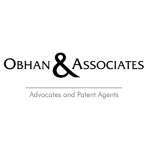Experimental data have always been an integral part of a patent specification. With patentability standards rising, the significance of data in a patent application is increasing more than ever.
There are various circumstances where data may be required in a complete specification, such as to show technical advancement; synergy under Section 3(e) of the Patents Act (the Act); efficacy under Section 3(d); and enable working of the invention.
Inventive step
Section 2(1)(ja) of the Act states that “inventive step” means a feature of an invention that involves technical advance as compared to the existing knowledge or having economic significance or both and that makes the invention not obvious to a person skilled in the art.
To address an inventive step objection, merely showing that a combination of prior art documents does not result in the claimed invention may not be sufficient. Instead, it must be established that there is a technical advancement over the prior art in the invention. Critically, even if the claimed subject matter is non-obvious to a person skilled in the art but fails to demonstrate a technical advancement or economic significance, the claims will still lack inventive step.
In La Renon Healthcare v Kibow Biotech (ORA/28/PT/2011/MUM), the Intellectual Property Appellate Board (IPAB) held that there must be express support for a claimed invention, by way of examples which support the invention and can justify the advantages of the claimed invention. In claims relating to antibodies, for instance, the Guidelines for Examination of Biotechnology Applications for Patent clarify that “Claims to antibodies that may have therapeutic or diagnostic potential are unsupported if a role for the target protein in a specific disease has not been identified and proved by sufficient data”.
In a selection patent, comparative data to show the technical advancement of the selected species as against the generic disclosure is essential to secure the grant of application.
Technical advancement must be present in the complete specification at the time of filing of the application. In Ajantha Pharma v Allergan (ORA/21/2011/PT/KOL), the IPAB held that data, especially comparative examples, were absolutely essential at the time of filing to support any advantages and claims. Any additional technical advancement discovered after the filing date ordinarily may not be admissible, although this position is slightly nuanced now.
Increasingly, there is some inclination to accept additional data after filing, also known as ‘post-filing data’, in the application. However, in such cases, the patent specification should present enough support that the claimed technical advancement was known to the applicant when filing the application itself.
In Astrazeneca v Intas Pharma (MANU/DE/1939/2020), the Delhi High Court points to when post-filing data cannot be taken on record: “post priority date evidence …. to show technical advance can only be taken into account to confirm the existence of technical effect which is found embedded in the specification of IN625 and is capable of being understood by a skilled person having common general knowledge and not to rely upon the same to establish its effect for the first time”.
Thus, an applicant may not be able to rely on a new technical effect in response to a first examination report (FER) or hearing notice if it is not supported by the specification. It was for this reason that the controller refused to accept the post-filing data in support of technical advancement in Indian Patent Application No. 6080/DELNP/2014 relating to a combination of givinostat with steroids/glucocorticoids. The controller’s decision (August 7 2020) noted that: “The post-filing data must be depend[ent] on the experimental data disclosed in complete specification, and [the] present application does not establish any data for the enablement of the claimed combination”.
Sufficiency
The exclusive right of a patentee to stop others from making or using their invention for a defined period is balanced by the obligation to disclose the invention in detail. This serves two purposes: firstly, after the period of exclusivity ends, others can make and use the invention; and second, the disclosed invention becomes the basis for newer technological developments. This obligation to disclose the invention in detail is contained in Section 10(4) of the Act, which states:
“10(4) Every complete specification shall–
(a) fully and particularly describe the invention and its operation or use and the method by which it is to be performed;
(b) disclose the best method of performing the invention which is known to the applicant and for which he is entitled to claim protection.”
Sections 10(4)(a) and 10(4)(b) jointly imply that the complete specification must contain enough details to enable a person of ordinary skill in the art to perform or make the invention thus disclosed, and should at least show the best mode of working of the invention. In effect, the disclosure must be an enabling disclosure which can be carried out by a skilled person in the relevant art without the burden of an undue amount of experimentation or the application of inventive ingenuity.
The IPAB order in Tata Global Beverages Limited v Hindustan Unilever Limited (TRA/1/2007/PT/MUM) provides some guidance in this regard. Here, the IPAB held that the sufficiency requirement is met if at least one way of working the invention is clearly described, enabling a skilled person to carry out the invention. Further, the IPAB said that Section 10(4) does not mean it be necessary to carry out all conceivable ways of operating the invention; instead, disclosure of the best method known to the applicant meets the requirement of sufficiency of disclosure. In FDC v Sanjeev Khandelwal and Ors (OA/15/2009/PT/MUM), the IPAB clarified although there in an obligation to submit the best method, the claims need not be representative of the best method.
However, where ranges of individual components or multiple embodiments are claimed, the applicant may have to submit sufficient working examples that cover the entire breadth of the claims. This is especially relevant in the fields of chemistry, biotechnology, and pharmaceuticals. The Guidelines for Examination of Patent Applications in the Field of Pharmaceuticals state that: “if the invention is related to product per se, description shall be supported with examples for all the compounds claimed or at least all the genus of the compounds claimed”.
Critically, the relevant data must be present in the complete specification at the time of filing the application. Although the acceptance of post-filing data is at the discretion of the controller, in some cases, additional working examples may be included during the prosecution of the application. However, in such cases, there must be adequate support for the same in the specification.
Working models
In addition to working examples, sometimes, the patent applicant may need to produce a model or sample of the invention. This requirement is based on the principle that a patent cannot be granted for an idea, and that the claimed invention must be capable of being practiced.
Section 10(3) of the Act provides that:
“If, in any particular case, the Controller considers that an application should be further supplemented by a model or sample of anything illustrating the invention or alleged to constitute an invention, such model or sample as he may require shall be furnished before the application is found in order for grant of a patent, but such model or sample shall not be deemed to form part of the specification”.
Unlike the data requirement for technical advancement and sufficiency, this data is not required to be submitted voluntarily, but only when requested by the patent office. In recent years, there has been a marked increase in the demand for this data, which is usually raised in the FER or hearing notice. This may be met by submitting a video of the product/device clearly illustrating its working or showing the method claimed.
Typically, this requirement is raised by the patent office in inventions relating to mechanical engineering, if the examiner believes that the invention does not appear feasible from the application itself. For example, where the invention seems to violate principles of natural law (such as inventions directed towards perpetual motion) or scientific principles, the examiner may ask for a model showing that such an invention works before a patent is granted.
When requested for a working model, it is advisable to submit the same unless it can be demonstrated that the patent specification sufficiently presents a proof of working of the claimed invention. In Indian Patent Application No. 1451/MUM/2013 relating to a solar-cum-electrical enhancer, the controller refused the application as the applicant was unable to furnish such a working model.
Section 3(d)
Section 3(d) bars from patentability a ‘new form’ of a known substance such as its salts, esters, ethers, polymorphs, metabolites, pure form, or isomers which does not result in the enhancement of the known efficacy of that substance or the mere discovery of any new property or new use for a known substance. For patentability of new forms, the applicant must also provide experimental data showing that the new form exhibits enhanced efficacy over the known substance.
In the landmark decision of Novartis v Union of India (Civil Appeal No. 2706-2716 of 2013), the Indian Supreme Court held that whether an increase in bioavailability leads to an enhancement of therapeutic efficacy in any given case must be specifically claimed and established by research data.
Efficacy data may be provided at the time of filing of the application or subsequently by way of post-filing data. The IPAB, in Pfizer Products v. The Controller of Patent and Designs (OA/30/2011/PT/DEL), while accepting an appeal against the Controller’s decision, held that the Controller “could have afford[ed] reasonable opportunity to the appellant to put forth the experimental data …. instead of mechanically and arbitrarily refusing the application”.
Section 3(e)
Section 3(e) of the Act bars from patentability a substance obtained by a mere admixture of components resulting only in the aggregation of the properties of these components. To address any objection under Section 3(e), it must be demonstrated that there exists a functional interaction between the components of the composition, which achieves a combined technical effect that is greater than the sum of the technical effects of the individual features.
In effect, a synergistic effect must be demonstrated by furnishing experimental proof that the components work together in a synergistic manner to achieve the claimed result. Synergistic effect could be in terms of improved efficacy, improved stability or shelf life, improved dissolution profile, or reduced toxicity, among other things.
In a post-grant opposition proceeding in Indian Patent No. 231479 relating to “Injectable preparations of Diclofenac and its pharmaceutically acceptable salts”, the patent office while refusing the application under Section 3(e) held that in the absence of any concrete evidence/data, the applicant’s claim that the efficacy lies in the reduction of pain at the injection site is not plausible. Specifically, it was observed that no clinical data of the claimed formulations was present in the complete specification showing there was less pain when the claimed composition was used over the prior art diclofenac injections.
In Willowood Chemicals Private Limited v Assistant Controller of Patents & Designs (OA/53/2020/PT/DEL), the IPAB set aside a refusal order by the controller in Indian Patent Application No. 2668/DEL/2015 relating to a synergistic herbicidal composition as the applicant was able to explain the synergistic data submitted in the specification.
Synergistic effect should be brought out in the patent specification by way of comparative data at the time of filing of the application itself. The applicant may also submit such data in a reply to an FER/hearing notice. However, subsequent submissions regarding synergism are accepted only if they are supported by the patent specification.
Conclusion
This brief examination of the purpose and utility of experimental data in Indian patent application is helpful to understand when such data can and should be included. To meet the requirements under Indian patent law, applicants are advised to submit (i) working examples, preferably based on the entire breadth of claims; (ii) comparative examples to distinguish the claimed invention from closest prior art; and (iii) efficacy data/ synergism data.
Where the applicant is unable to generate sufficient data, it would be preferable to include adequate disclosures regarding the working of the invention as well as the technical effect obtained from the invention. The objective should be to provide a sufficient basis for including post-filing data at a later stage, so that the applicant’s rights are protected throughout the course of the prosecution of the application.
Click here to read this article in Japanese
Click here to read all the chapters from the Japanese Buyers' Guide 2021

Aparna Kareer
Partner
Obhan & Associates
T: +91 11 4020 0200
Aparna Kareer is a partner at Obhan & Associates. She is a registered patent agent with the Indian Patent Office and a lawyer.
Aparna’s areas of expertise include biotechnology, chemical, pharmaceutical and nanotechnology. She has over 15 years of extensive experience working closely with clients, providing a full range of commercially focused patent services including drafting and prosecution of patent applications in India and other jurisdictions.
Aparna is actively involved in patent litigation and patent opposition proceedings and has represented clients in various courts in India, the Patent Office and the Intellectual Property Appellate Board.

Sneha Agarwal
Principal associate
Obhan & Associates
T: +91 11 4020 0200
Sneha Agarwal is a principal associate at Obhan & Associates. She is a registered patent agent with the Indian Patent Office and a lawyer with a background in biotechnology, specialising in life sciences and chemical domain.
Sneha has over 10 years’ experience in full range of commercially focused patent services, including drafting and prosecution of patent applications in India and other jurisdictions, and legal opinion on various issues related to patent, biological diversity and design law in India.
Sneha regularly appears in oral proceedings for prosecution and opposition matters.













